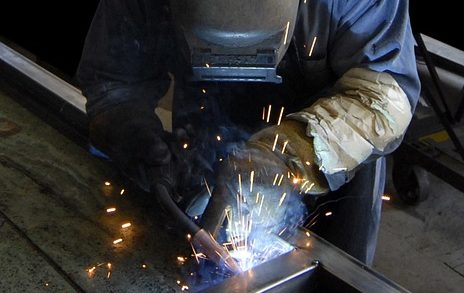A Brief History of Welding Engineers — BWM Services Has Qualified Welding Engineers to Meet Your Demands
Arc welding became recognized as a viable technique for joining and repairing iron steel in the years following World War I. This led to an increased interest in welding throughout the world. Welding started being promoted as a manufacturing technique, which eventually led to the organization of six welding conferences held annually from 1932 to 1937. As a result, a combined Industrial/Welding Engineering degree program was developed and launched in 1938. Between 1938 and 1944, 20 BS Industrial Engineering/Welding Engineering degrees were granted, but the program was interrupted by World War II.
In 1947, Robert S. Green was hired by OSU to establish a Welding Engineering Dept., which was formally launched on January 1, 1948. Green put a curriculum in place that included courses in metallurgy, mechanics and strength of materials, machine design, structural design and electrical engineering. These core areas would form the basis of the multidisciplinary curriculum that exists today. In addition, the curriculum included a hands-on component that allowed students to gain an appreciation of welding by learning the manual skills required. The first class of welding engineers graduated in 1948. Through the 1950s and 1960s, Welding Engineering Dept. faculty averaged about three, and the department was extremely dependent on courses taught by other engineering departments. The MS degree in welding engineering was approved in 1956.
The Welding Engineering Academic Program and Students — BWM Services Can Meet Your Demands with Our Qualified Welding Engineers
Welding engineering is a rigorous, complex program. It requires students to be proficient in a broad range of engineering disciplines. Before taking courses in welding engineering, students are required to take an engineering core that includes differential calculus, calculus-based physics, statistics, statics and mechanics of materials and thermodynamics.
Once admitted to the welding engineering program, students begin a curriculum that is the most interdisciplinary of any in the College of Engineering, including courses in materials science, mechanical, electrical and industrial engineering. Within the welding engineering program, students take advanced courses in welding metallurgy that cover materials ranging from low-alloy and stainless steels to nonferrous alloys such as nickel, aluminum and titanium to polymers. Theory and industrial welding processes are emphasized in welding process courses. This includes manual and mechanized arc welding, laser and electron beam welding, solid-state welding and resistance welding.
A thorough understanding of many electrical concepts in welding, such as process control and transformer theory and operation are developed by the students in this program. Welding design courses discuss the principles of crucial subjects such as computational modeling, heat flow, residual stress, fatigue and fracture, and weld design for a variety of loading conditions utilizing industry-standard codes such as AWS D1.1, Structural Welding Code — Steel, and ASME Boiler and Pressure Vessel Code. Nondestructive materials characterization techniques including X-ray, ultrasonics, eddy current, magnetic particle and dye penetrant are emphasized. The fully equipped center gives students a number of opportunities to receive hands-on experience through various welding process laboratories, including arc (manual and mechanized), resistance, laser and solid-state welding. All students are required to complete one summer engineering experience and spend their entire senior year working on an actual “real-world” engineering project under the guidance of their industry sponsor.
Welding Engineerinng Graduate Programs and Distance Education
The welding engineering graduate program has grown immensely in recent years with increased research funding and growth in distance education. In addition to the MS and PhD degrees offered, a fully online MS in welding engineering is available to students who qualify. Similar to the undergraduate program, the graduate program is math and science based with an emphasis on leading and advancing materials joining education and research.
The MS can be completed with or without a thesis. It includes a depth and breadth requirement. For the depth requirement, students can select a sequence of courses in one of the following areas:
- welding processes
- metallurgy
- design
- nondestructive evaluation
- joining of plastics and composites
For the breadth requirement, students take one course (typically the first introductory course) in the remaining four areas that they have not chosen for their specialization. Additionally, they can usually take one or two technical electives that can be outside welding engineering. The majority of on-campus MS students select the thesis option, while nearly all distance students select the non-thesis option. However, even the non-thesis option includes a smaller culminating open-ended independent study project.
The PhD in welding engineering is typically pursued by students who already have or recently acquired an MS degree in welding engineering or another engineering discipline. With special approval by the Welding Engineering Graduate Studies Committee, exceptional students can proceed directly from a BS in engineering to the PhD program, which includes a sequence of courses specializing in one of the following areas: welding processes, metallurgy, design, nondestructive evaluation and joining of plastics and composites. Additionally, students select one of the remaining areas for a minor (fewer courses) and another minor outside of welding engineering related to their research work. The PhD dissertation is an extensive body of research that increases the knowledge in materials joining or allied field.
Established in 2003, the online web-based MS in welding engineering expanded the availability of a welding engineering education to a wider audience. Online courses were first offered in the 1998-99 academic years and have grown to the pint where almost all graduate courses are now available online. Additionally, the faculty in the Materials Science and Engineering Dept. have added online course offerings specifically for welding engineering distance education students. It is designed for engineering professionals who usually take one or two courses per semester, and complete the program in about three years.
As mentioned earlier, enrollment in the welding engineering graduate programs has increased immensely in recent years. This has put on-campus enrollment at 356, split nearly evenly between MS and PhD students. With the change to semesters and reduced cost for online courses, enrollment of online MS students is at an all-time high with approximately 35 students actively enrolled in the MS program by taking courses as graduate non-degree students. Welding engineering is not ranked separately, but the Materials Science and Engineering Dept. was ranked 18th in the most recent U.S. News and World Report Graduate School rankings. The College of Engineering, with the only online degree being the MS in welding engineering, was ranked 23rd in the most recent U.S. News and World Report Best Online Graduate Engineering Programs rankings.
Welding Engineering Careers — BWM Services Hires Qualified Welding Engineers to Ensure Your Demands are Met
Graduate from engineering programs are called engineers. Often times, they pursue entry-level work involving conceptual design or research and development. Many continue on to graduate level work in engineering. While graduates of four-year technology programs are called technologists, graduates of two-year engineering technology programs are called technicians. These professions are most likely to enter positions in sectors like construction, manufacturing, product design, testing or technical services and sales. Those who choose to further their study consider engineering, facilities management or business administration.
The fundamentals and engineering principles emphasis develops critical problem-solving and decision-making skills that graduates can use throughout their careers. The diverse curriculum prepares students for a wide range of possible careers. Over the past 5 years, graduates have been hired by more than 50 different companies in the industry sectors that include nuclear, petrochemical, automotive, medical, aerospace, power generation and heavy equipment. The number of welding engineering jobs continues to be significantly greater than the supply of welding engineers.
The Future of Welding Engineering — BWM Services Has Qualified Welding Engineers to Ensure Your Project Demands are Met
The program is arguably at the strongest position in its history. The record number of undergraduate students, a vibrant research portfolio and a thriving distance education program are all indicators of current strength of the program. The program is recognized internationally in the field of materials joining and has achieved the stature of other successful programs, such as those at Harbin Institute of Technology in China, Osaka University in Japan, and Aachen University in Germany.
Source: aws.org


